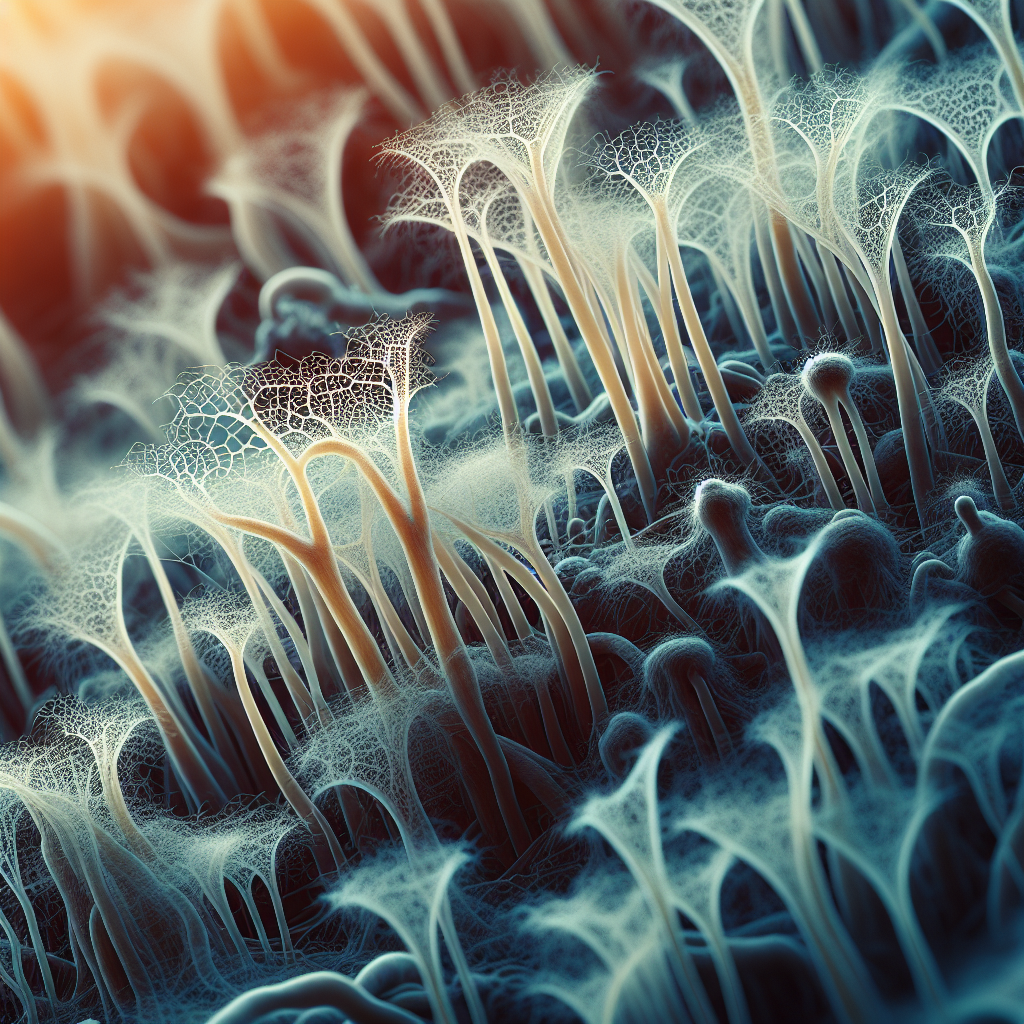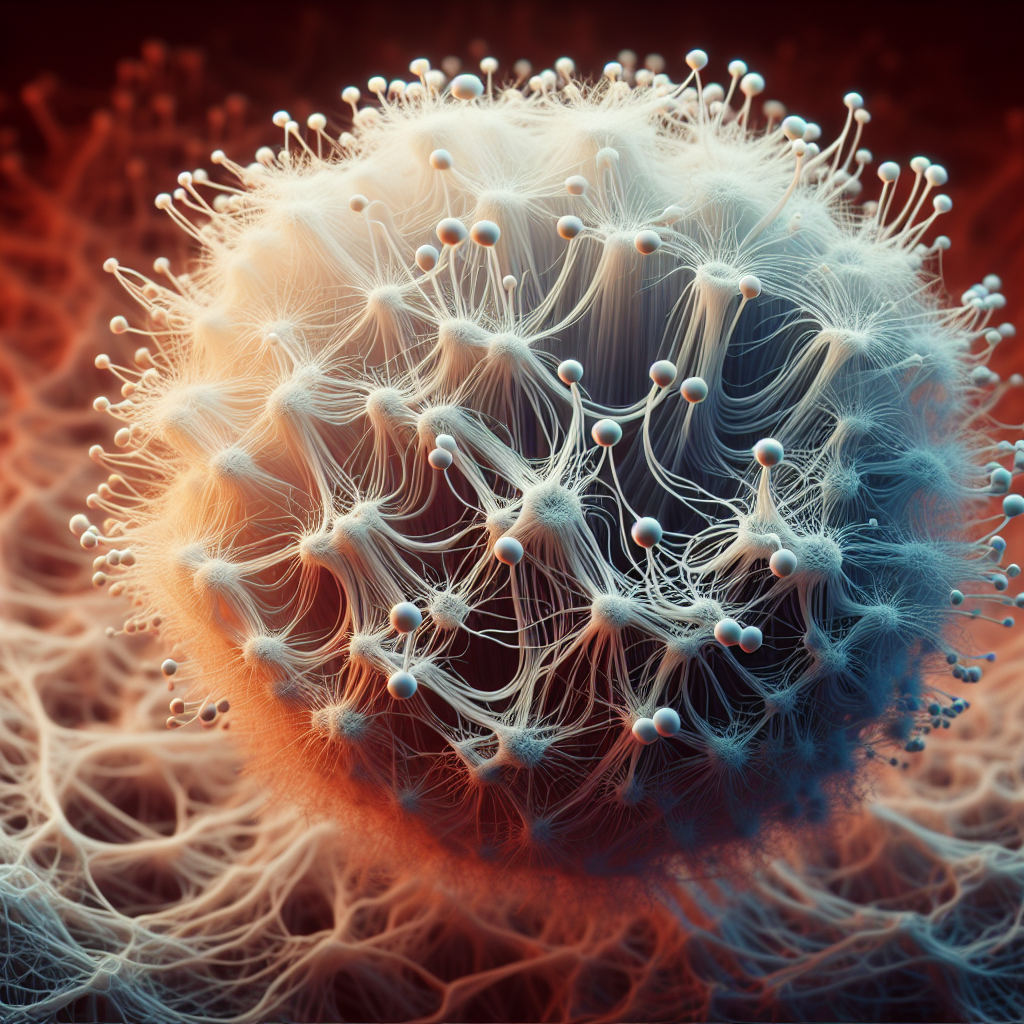In “Understanding the Role of Mycelium in Biology”, you’ll explore the fascinating world of mycelium — a critical, yet often overlooked, component within the field of biology. This article meticulously unfolds the definition and functionality of mycelium, a complex, thread-like network of fungal cells that uniquely interplays with ecosystems across the globe. Embarking on this insightful journey, you’ll grant sharper acuity to your scientific lens, and profoundly deepen your knowledge of biology’s intertwined systems. Witness how mycelium, even in its unseen subtlety, substantially impacts our planet’s ecological balance.

Definition of Mycelium
The term “mycelium” is derived from the Greek word μύκης (mykes), meaning “fungus”, and refers to the threadlike vegetative part of fungus. This network of branching hyphae serves as the primary source of fungal growth and are found in and on substrates where fungi live, extending into their nutrient source.
Core Meaning of Mycelium
Mycelium plays a fundamental role in the life cycle and operation of fungi organisms. It forms the foundation of the fungus, functioning as the structure which supports and promotes growth and reproduction. The mycelium is a complex and intricate network, capable of spreading over enormous areas and depths, depending on the nutrient availability and environmental conditions.
Relation to Fungi Species
Nearly all fungi produce mycelium as part of their life cycle. In fact, the presence of mycelium is considered a defining characteristic of the fungal kingdom. Different species of fungi can be differentiated based on the composition, density, and behavior of their mycelium.
Structure and Characteristics of Mycelium
Mycelium consists of a mass of hyphae, which are singular, tubular strands. These hyphae intertwine and branch out, creating a web-like structure. Each hypha grows at its tip while the other end can be involved in material absorption. The structure of mycelium can vary significantly between species, but it generally has a filamentous, mat-like appearance. It is also extremely tenacious and resilient, capable of surviving in adverse conditions.
Role of Mycelium in Biology
Mycelium has a significant role to play in biological ecosystems, serving multiple functions that contribute to soil health, plant growth, and nutrient cycling.
Mycelium in Fungal Reproduction
One of the primary functions of mycelium is contributing to fungal reproduction. It allows fungi to reproduce both sexually and asexually, creating spores which are structures for propagation.
The function of Mycelium in Nutrient Absorption
Mycelium aids in nutrient absorption by tapping into its substrate and extracting nutrients. Given its structure, the surface area to volume ratio is high, facilitating efficient nutrient absorption.
Mycelium’s Role in Supporting Plant and Soil Health
Mycelium forms symbiotic relationships with plant roots, aiding in nutrient acquisition while benefiting from the plant’s photosynthetic capabilities. Furthermore, it plays a primary role in soil health, contributing to decomposition and nutrient cycling.
Mycelium and Fungal Reproduction
Reproduction is a crucial aspect of fungal propagation, and mycelium plays a substantial role in this process by facilitating both sexual and asexual modes of reproduction.
How Mycelium Contributes to Spore Formation
Mycelium produces specialized structures for spore formation. Spores are microscopic particles which can develop into a new organism. When these spores come into contact with a conducive environment, they germinate into new mycelium.
Mycelium and Sexual Reproduction in Fungi
Sexual reproduction in fungi involves the fusion of two mycelium types, leading to the production of a unique offspring. The resultant structure contains spores that are genetically different from the parent fungi.
Mycelium and Asexual Reproduction in Fungi
In asexual reproduction, hyphae of the mycelium produce spores that are genetically identical to the parent. This process is a common mechanism in fungi for rapid propagation and colonization of substrates.
Mycelium and Nutrient Absorption
The ability of mycelium to extract nutrients from the environment is of vital importance to fungal survival, growth, and reproduction.
How Mycelium Extracts Nutrients from Soil
Mycelium secretes extracellular enzymes that break down complex substances in the substrate into simpler nutrients, which are then absorbed by the mycelium. The vast network of filaments provides a large surface area that is efficient for absorbing these nutrients.
The Role of Mycelium in Nutrient Transportation
After nutrients are absorbed, mycelium transports these substances through its network of hyphae to the areas where they’re needed, ensuring nutrition for the entire organism.
Mycelium’s Contribution to Mineral Uptake
Mycelium has an important role in enhancing mineral uptake by plants. Nutrient acquisition becomes more efficient due to the extensive mycelial network that can access areas beyond the plant roots’ reach.

Mycelium and Soil Health
Mycelium significantly contributes to maintaining and improving soil health, playing an active role in nutrient cycling, ecosystem functioning, and soil conservation.
Decomposition and Nutrient Cycling
By breaking down dead organic material, mycelium aids in decomposition and return nutrients to the soil, effectively participating in nutrient cycling.
Interaction with Plant Roots and Beneficial Bacteria
Mycelium often establishes mutualistic relationships with plant roots and beneficial bacteria. It helps in the absorption of water and minerals by the plants and receives organic nutrients in return.
Mycelium in Soil Erosion Prevention
Mycelium’s thread-like structure contributes to soil structure by binding soil particles together, preventing soil erosion by enhancing its stability and maintaining the soil’s capacity to hold water.
Mycelium in Symbiotic Relationships
Symbiotic relationships involving mycelium prominently feature in natural ecosystems, where they contribute to biodiversity and productivity.
Mycelium and Mycorrhizal Relationships
Mycorrhizal relationships involve a symbiotic partnership between mycelium and plant roots. The hyphal network helps the plant access nutrients, especially phosphorus, which is difficult to obtain from the soil. In turn, the plant provides the mycelium with carbon nutrients derived from photosynthesis.
The Role of Mycelium in Lichens
In lichens, mycelium forms symbiotic associations with algae or cyanobacteria, providing protection and access to nutrients, while receiving photosynthetic products.
Mycelium in Interactions with Animals
Some mycelium species form associations with animals, such as insects, where they provide nutritional benefits or protection against pathogens.
Mycelium in Disease and Pathology
Mycelium also has a darker side; it can be responsible for disease in plants, animals, and even humans.
Mycelium-Based Plant Pathogens
Certain types of mycelium are pathogenic to plants, causing diseases like root rots and wilts. They can invade plant tissue, extracting nutrients, and causing damage.
Mycelium in Human and Animal Pathogens
Mycelium is implicated in various human and animal diseases. Certain fungi can cause infections by producing invasive mycelium that disrupt bodily functions.
The Role of Mycelium in Disease Spread
Mycelium can contribute to the rapid spread of diseases. The extensive network of hyphae can dispatch spores far from the originating point, spreading the disease across vast distances.
The Biotechnological Potential of Mycelium
The unique properties of mycelium have significant potential for various practical applications in biotechnology.
Mycelium in Bio-remediation
Mycelium is known for its ability to degrade and transform various toxic substances, making it highly beneficial for bio-remediation efforts, such as cleaning up oil spills and other environmental contaminants.
Utilization of Mycelium in Material Science
Mycelium’s robust and resilient structure can be harnessed for use in material science. It has potential applications in the manufacturing of eco-friendly alternatives for traditional building and packaging materials.
Mycelium in Sustainable Agriculture Technologies
Mycelium has the potential to revolutionize sustainable agriculture technologies. Through practices like mycorrhizal augmentation, farmers can improve crop yield, health and even control pests and diseases in a sustainable way.
Scientific Studies on Mycelium
Mycelium continues to be a subject of extensive scientific research due to its critical role in ecosystems and potential biotechnological applications.
Prominent Research Findings on Mycelium
Some of the most significant findings in mycelium research include its ability to detoxify polluted environments, improve crop yield, and its application in the development of sustainable materials.
Limitations and Gaps in Current Mycelium Research
Despite many advancements, knowledge of mycelium is still fragmentary. Not all mycelium interactions and functions are fully understood, and many mycelium species remain unexplored.
Future Directions for Mycelium Study
Future mycelium research is likely to focus on its application in waste management and sustainable technologies, exploring the role of mycelium in global carbon cycling, and improving our understanding of its interactions with other species.
Conclusion and Perspectives on Mycelium
Mycelium plays a foundational role in many ecosystems, influencing soil health, supporting plant life, and driving nutrient cycles.
Mycelium’s Significance in Ecosystem Functioning
Its importance as a decomposition agent and a facilitator of nutrient cycling should not be understated. The creation and enhancement of soil structure, along with the prevention of erosion, places mycelium as a key contributor to maintaining ecosystem balance.
Potential Applications and Innovations with Mycelium
The harnessing of mycelium in bio-remediation, sustainable agriculture, and material science offers immense potential for future developments. Further research into these areas could lead to important breakthroughs, promoting sustainability and ecosystem health.
The Future of Mycelium in Biology and Biotechnology
With an increasing global focus on sustainability, the prospect of leveraging mycelium in innovative ways presents exciting possibilities. With ongoing research and development, one could foresee an era where the numerous benefits of mycelium are used to address some of the most significant environmental and agricultural challenges. However, to fully unlock its potential, continuous study and exploration of this remarkable organism are needed.